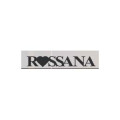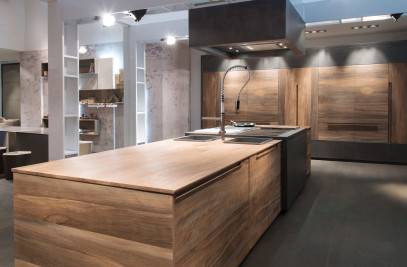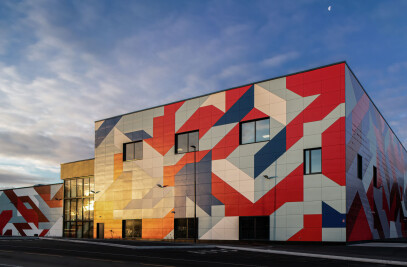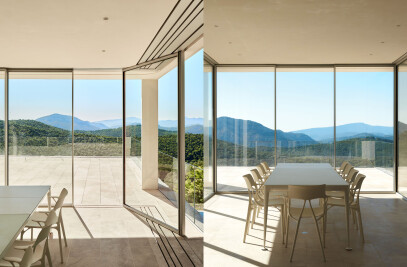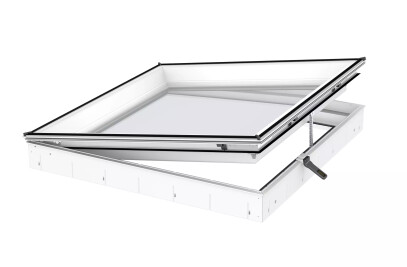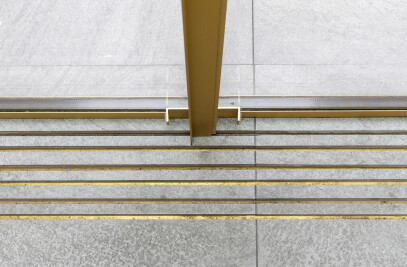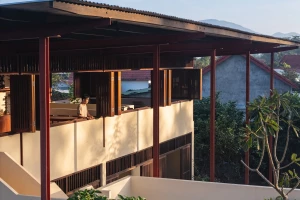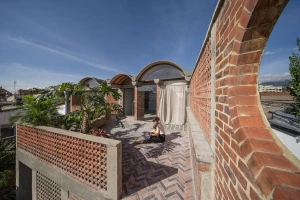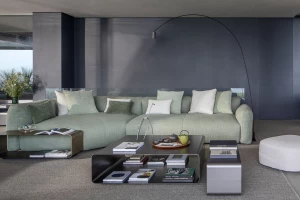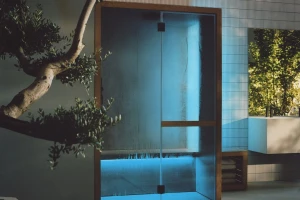The artistic installation conceived by Vincenzo De Cotiis focuses on the “idea of the kitchen to come”.
Without offering solutions, he leaves it to every observer to find himself reflected in these shapes and imagine the kitchen that will suit him best in 2050.
Burnished brass, wood and stone, a kitchen for use in the middle of the room only, with original forms, a “work centre” that updates and rethinks tradition.
DC10 is an extraordinary object of great intensity: a dark, dramatic kitchen, firmly determined to last for decades, coming in to land amidst future generations. The choice of metal carries a message of solidity and permanence, but also the almost scientific connotations of a research laboratory, or even a Wunderkammer. And that row of doors are also gates, leading to storage compartments that contain precious things and memories, protecting them from nuclear winters and the roller coasters of fashion.
DC10 is a combination of island and peninsula components, for site-specific furnishing of tailored precision. It does not envisage wall units or cupboards and the material used for the doors, brushed burnished brass, is an absolute novelty in this context, generating warm, luxurious surfaces. Worktops are extraordinary; they have rounded edges and a large recess interrupted by counter-top appliances and accessories. Inside, the kitchen has a carcase with high technical and design values, associated more with living-room than with kitchen furniture.
After completing his studies at the Istituto d'Arte, Vincenzo De Cotiis, born in Mantua, graduated in Architecture from the Politecnico di Milano. His interest in what would later become the trademarks of De Cotiis' work as an architect, designer and stylist was already apparent from his early designs: extremely pliable materials, the recovery of vintage pieces and textiles given a new lease of life with unusual combinations and colours that blend into the material.
Two fundamental elements characterise De Cotiis' work: large dimensions and signs of the passage of time. Within a contemporary vision of architecture and interior design, De Cotiis uses textured materials, favouring salvaged items for those elements that preserve the charm of the patina of time which can affect both the colour and appearance of the surface, in a reinterpretation with a decidedly modern feel. He has always been fascinated by the flavour of history, which also arouses a desire to introduce new and personal touches in settings from a past era, sometimes even in a decadent style.These principles also formed the foundation for the project created for Rossana: DC10 in burnished brass and stone, a kitchen to be used only in the middle of the room, a 'work centre' which updates and rethinks tradition. An extraordinary object of great strength. His approach to interior design is focused on the atmosphere of the room. The resulting need to create specially designed furnishings and decorations comes from a kind of intuition, in other words the evolved clientele's need to look at objects that are not standard but have a strong identity. The deep-rooted craftsmanship that characterises Vincenzo De Cotiis' work in interiors and furnishings inevitably makes his designs similar to works of art in terms of their exclusivity and uniqueness. When defining the style of Vincenzo De Cotiis as an interior designer, the concept of minimalism crops up again and again, almost as a contracted form rather than a concept in itself. In any case, interiors designed by De Cotiis show a marked tendency towards environments containing only a few high-impact elements, a theme that is characteristic of our time. However, it is not a reduced form of minimalism since the symbology of the decoration, intended as an actual language, exerts a kind of pull on De Cotiis, who personally creates all the objects and decorations, which always require manual production and assembly.
Interior designer for Hotel STRAF in Milan, which opened in 2004, De Cotiis has also designed many boutiques, such as Antonia in Milan, Folli Follie in Brescia, Vinicio in Lissone, Pozzi Lei in Monza and Treviglio, Tessabit in Como, Hotel in Bologna, Sugar in Arezzo, Joffre in Barcelona, the multi-label “PBox” stores, and Vertice in Turin, the format for the new one-brand Alberta Ferretti.


